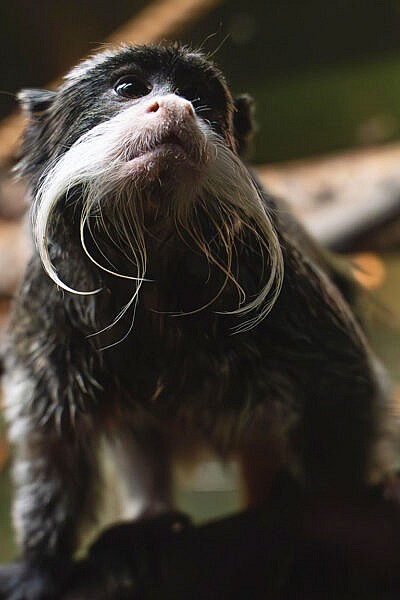Excitement is in the air as two lively mustachioed characters, bearded emperor tamarins named Dot and Chico, settle into their summer home. Dot, the savvy 10-year-old leading lady, and her sidekick, Chico, a spirited 2-year-old male, recently moved into a monkey aviary in the tapir yard.
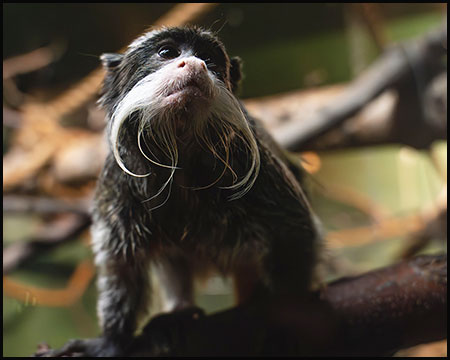
In addition to a new summer home, they’re getting new neighbors. The plan is for 25-year-old mountain tapir, Mochi, to share his existing yard with the tamarins and 11-year-old okapi, Bahati.
Dot moved to CMZoo in November 2023 and spent a short time sharing space with Rio, a golden lion tamarin who previously lived in Primate World. Rio recently moved to another zoo accredited by the Association of Zoos and Aquariums to join a companion. After their keepers saw the two tiny monkeys didn’t appreciate each other’s company, Dot moved to an off-exhibit space in Scutes Family Gallery, where Chico joined her in May 2024. Dot and Chico are getting along well.
“Chico and Dot are so much fun to watch, and you can tell they like being together,” Madi Ort, Primate World animal keeper says. “Dot is the epitome of confidence and curiosity. In a word, she’s fast. She does everything with quickness. She’s a master problem-solver who loves a good challenge. She’s known for her expert bug-hunting skills and can tackle any puzzle feeder with finesse, snatching up those crickets, grapes and tamarin diet faster than you can blink!”
In ‘Emperor Tamarin World,’ females are in charge, so it’s not surprising that Dot takes the lead on all occasions. She’s first to check out new enrichment, first to get the snacks and first to approach keepers to train. Keepers share space with the little primates, who resemble a black, gray, white and red-furred tornado, whirling around the perching as keepers clean, set up activities, restock feeders and check on their physical health. The two cuties can be difficult to tell apart, but Chico has black spots on his chin and larger ears. Both have emperor tamarins’ distinctive white moustaches, which are actually long whiskers that curve down well beyond their chins. The best way to tell who’s who is by behavior. If one is taking the lead, it’s likely Dot.
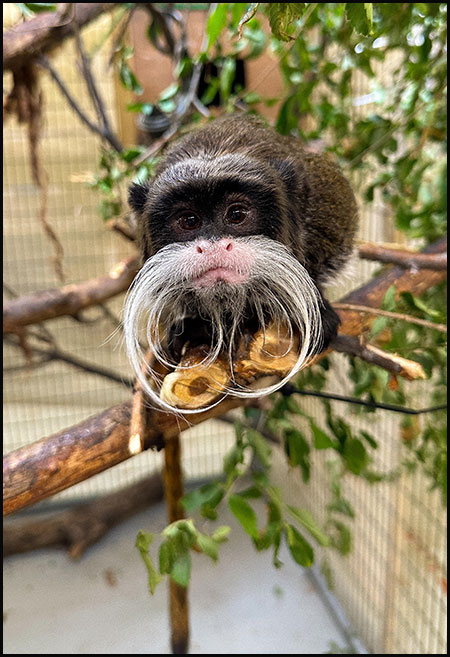
“Chico is much more laid-back, but he still brings that ‘emperor tamarin energy,’” Madi says. “He usually comes close to keepers to offer different husbandry training behaviors, while Dot jets for whatever fun we have set up for them. He’s eager to please and just all-around adorable. He’ll melt your heart.”
Madi says the pair are quite vocal, making a range of calls from loud ‘alert calls’ that resemble a fire alarm, to high-pitched chirps that she calls their ‘happy noises.’ These two aren’t all talk and no action; they’re thrill-seekers, too! They’re constantly leaping from branch to branch with the agility of seasoned acrobats. When they’re not showing off their moves, they’re chatting away with their chirps, likely sharing insider tips on where to find the tastiest snacks.
Their confidence, curiosity and connection have set them up for success to navigate new spaces, inside and outside of the aviary, as they please. After they settle in and show they’re comfortable in the aviary, their care team will open the doors during the day, and they’ll go where they want throughout a carefully planned system of trees in the tapir yard.
Their move to the mountain tapir yard isn’t just about a change of scenery, it’s a chance for them to explore more of their wild side. Madi encourages guests to look up into the trees and to listen for their chirps to watch their adorable antics. Bearded emperor tamarins, like Dot and Chico, are native to the rainforests of South America, where they contribute to the biodiversity of their delicate ecosystem.
By seeing them in a habitat that mimics their native environment, visitors’ appreciation for the species can grow while they learn about the importance of preserving rainforests. Guests can help conserve rainforests by using the PalmOil Scan app (cmzoo.org/palmoil) when grocery shopping and supporting companies that have committed to sourcing sustainable palm oil in their products. They can also choose Forest Stewardship Council-approved paper and wood products, reduce their carbon footprints by carpooling or choosing airline travel with fewer connections, and continue to visit zoos that support frontline conservation, like Cheyenne Mountain Zoo.
“We’re so excited for everyone to see them in this space and to meet Chico for the first time,” Madi says. “They’re really smart, and they’re crate trained, so we’ll train them to return to the aviary in the evenings for their safety overnight. We have had this setup with Geoffroy’s marmosets before, and it went really well. They would return to their aviary voluntarily each afternoon.”
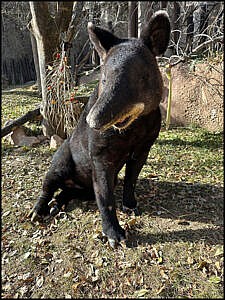
As if that wasn’t enough to look forward to, the two have a breeding recommendation from the Emperor Tamarin Species Survival Plan, which aims to increase the genetic diversity of emperor tamarins in human care. Dot and Chico have been observed breeding already, and while baby tamarins would be exciting, they are not guaranteed.
Dot has been paired with male tamarins in the past and has not produced offspring. That makes Dot’s genetics incredibly important to the diversity of the population, so keepers are realistic but hopeful that her and Chico’s budding relationship might lead to offspring down the line.
Mochi, the Zoo’s beloved mountain tapir, isn’t paying much attention to Dot and Chico since they moved into the yard on June 24. Next, Mochi, Dot and Chico will welcome a much larger special guest: Bahati, the Zoo’s okapi, who lived near the giraffe for many years. There’s no set date for Bahati’s move yet. Muscovy ducks, Athena and Franny, will keep their home in the tapir yard, too.
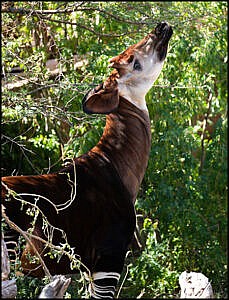
In the Zoo profession, this dynamic is called a ‘mixed species habitat,’ which can provide an incredibly enriching environment for animals. It’s not a case of putting animals together without a plan, though. Animal Care Manager, Joanna Husby, and a team of animal behavior experts who know Mochi and Bahati as individuals, have been meticulously mapping their introductions.
“We’re dealing with two incredibly laid-back individuals in Bahati and Mochi, so we have high hopes,” Joanna says. “We’ll set up barriers between Mochi and Bahati at first, and there’s room in the yard for them to both have their own space. The plan is for them to share space eventually, but we’ll follow their lead. There’s no rush and we know them well enough to tell when they’re comfortable or if they need more time or adjustments to the space.”
Bahati’s move is prompted by the expansion of African Rift Valley, already underway. Throughout construction, CMZoo’s planning team is committed to giving guests access to all of the animals they love. As the team makes progress on projects, they’ll update pathways for guests. Guests and members can watch for signs on how to navigate through African Rift Valley. CMZoo fans can learn more about the giraffe herd’s future home and consider supporting it at cmzoo.org/giraffeproject.
